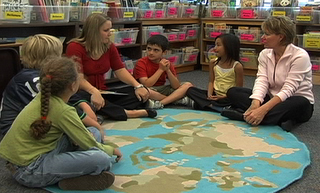Moving from Guided Reading to Strategy Groups
Join Our Community
Access this resource now. Get up to three resources every month for free.
Choose from thousands of articles, lessons, guides, videos, and printables.

Whenever we begin something new, we must remember to give ourselves the grace to learn and become proficient. Years ago, when we were reflecting about our guided reading groups, we realized that even though the groups included children at generally the same reading level, the students in the group had different strategy needs. That is originally why we began shifting from traditional guided reading groups to strategy groups, where children were with others who needed to learn the same strategy to move forward in their reading. This shift came from our belief that our students needed more focused instruction on strategies rather than just gathering in a small group to read a book together.
However, we didn’t just dump everything we knew about how to run and manage guided reading groups and move headlong into strategy groups. Instead, we began with just one small group of children we gathered together based on their similar strategy need, even though they didn’t all read at the same level. We used a variety of materials and instructional approaches—all geared toward teaching the children in the small group how to become proficient with the strategy and practice the strategy in their own good-fit books.
While we were learning how to work with one small strategy group, we gave ourselves permission to keep the rest of the children in their traditional guided reading groups. As we became more proficient with small strategy group instruction, we shifted to holding two small strategy groups while the rest of the class stayed in guided reading groups. Over a few months, we eventually changed all of our small-group work from traditional guided reading groups to our current method of small strategy groups.
It didn’t happen overnight. It really came from our deep-rooted belief that children deserve to be taught the strategies they most need. This belief made it possible to persevere through the ups and downs of changing what was familiar. Our children are better readers as a result of the shift, and we are better at meeting our students’ needs.






